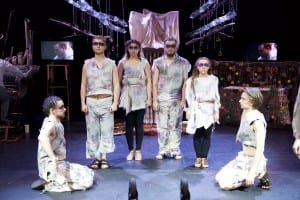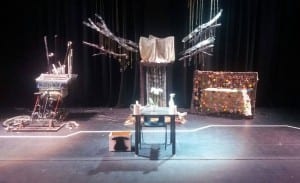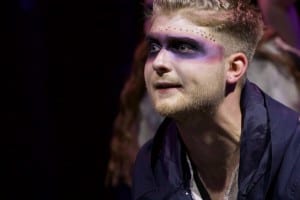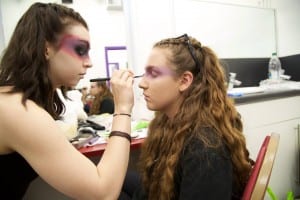As seen from the pictures above, ‘Orchid’ is particularly episodic in nature. The Interlude scenes provide the backbone of the show, adding a certain continuity, and allow us as a company to explore different avenues when it comes to the other scenes. When I say ‘different avenues’, I am referring to the multiple madness scenes, for which many company members wrote text for. These scenes are, for the most part, wildly different in style. In any other situation, this would be a worry, but I believe that it is this continuity of the Interludes that allows us to perform all this material coherently. The logic set down by the Interludes allow us to flick about episodically, as it will always come back to familiarity. A more trivial note now, as through this I have discovered the undeniable usefulness of whiteboard and marker when mapping out a show (as paper and pen can get quite tedious when working organically).
I do not believe I would be misrepresenting anyone in the company when I say that we do not feel comfortable when material has stayed the same for an extended period of time. Whilst this has both positive and negative aspects to it, I do not think Rubbish could work in any other way. Taking material back to the workshop, deconstructing it and building it back up has proved invaluable to our process. In fact, this was done with the whole show not long before ‘Orchid’s’ debut, a situation no theatre company wants to be in. However, stripping the entire show back and revisiting all the material we had created made us realise how much there actually was. From there, the show was pieced back together, and was better for it. Working in this way allows for boundaries and conventions to be broken and warped. We wanted everything to be on the table so to speak, and the Interludes gave us the ability to break those boundaries elsewhere in ‘Orchid’.









